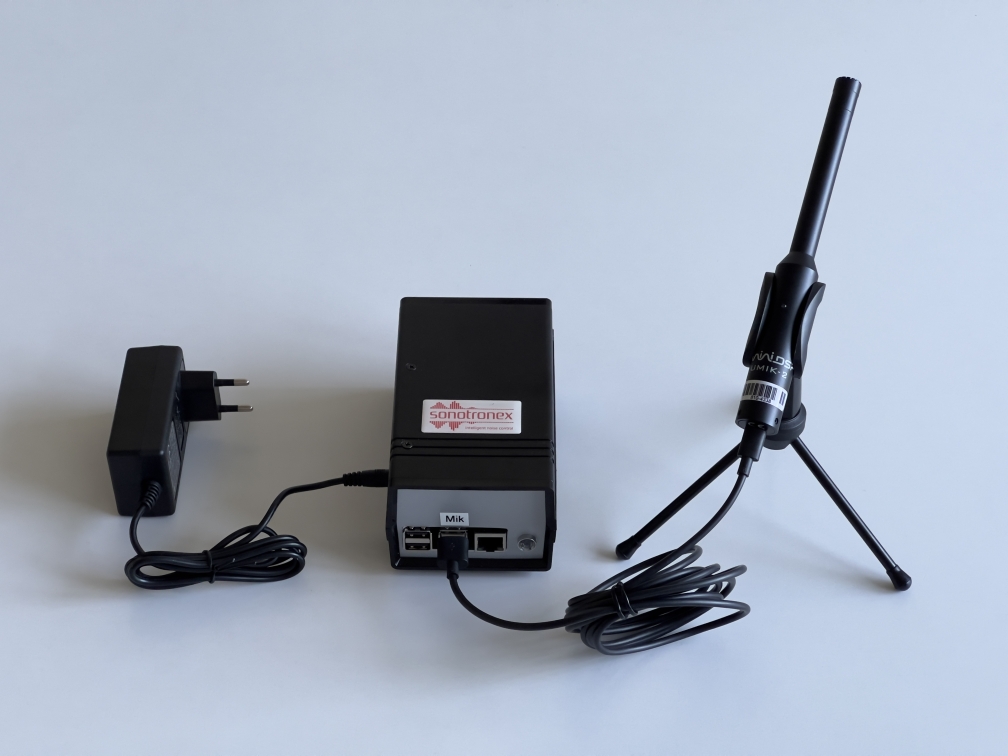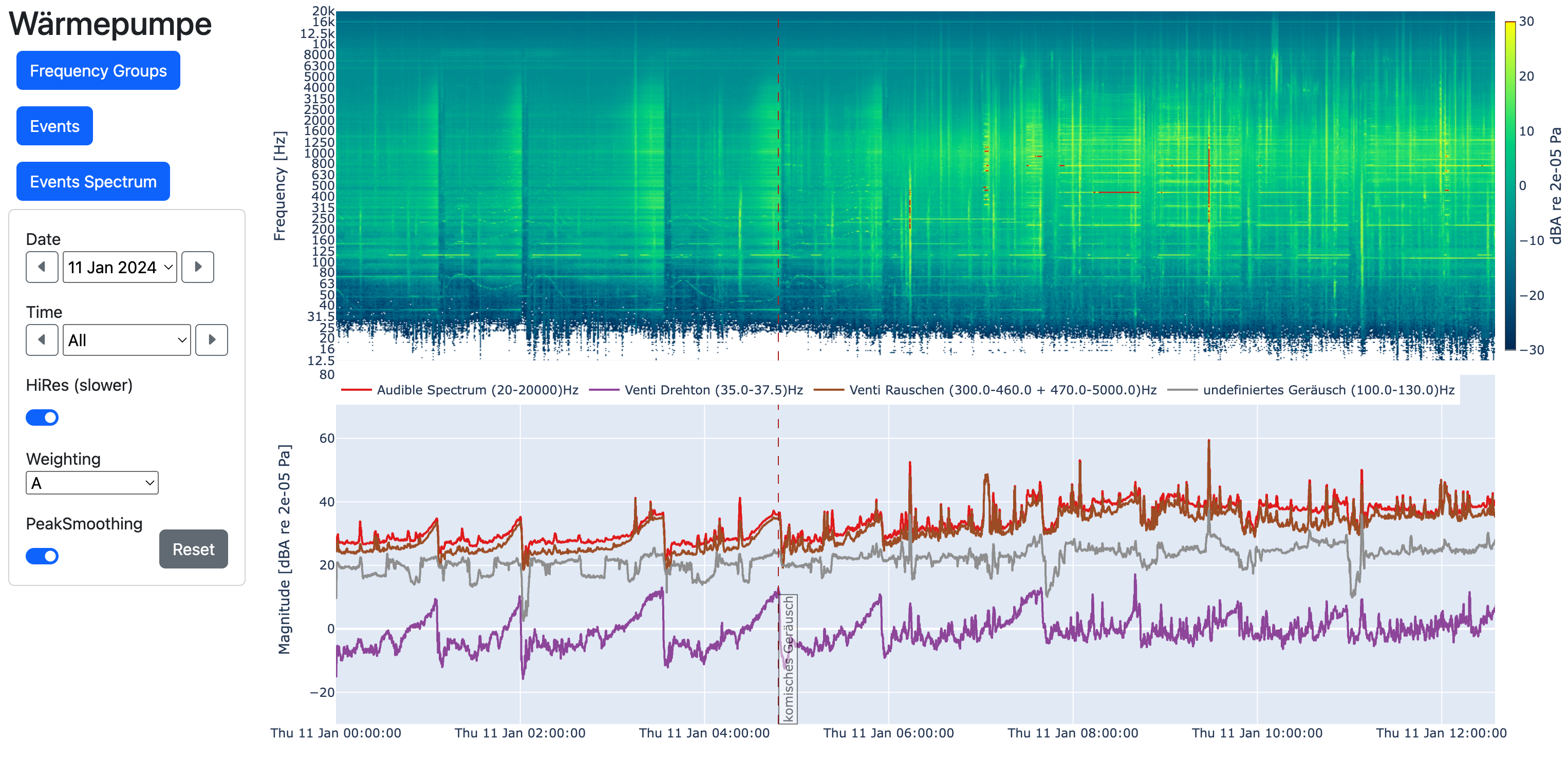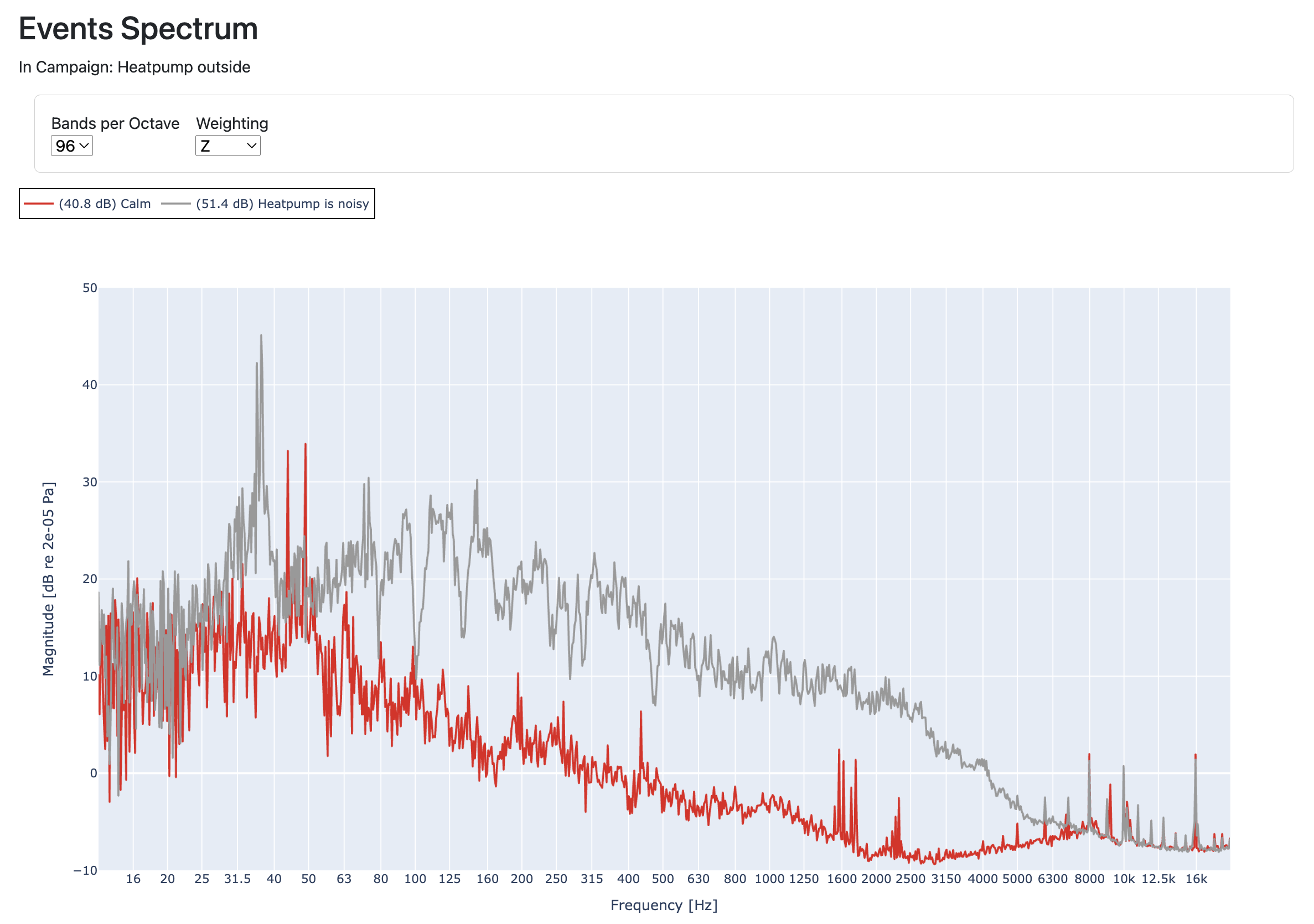High-Resolution Noise Monitoring
Detect & identify any sound disturbance in your home with unprecedented accuracy, even below usual hearing thresholds and at low-frequencies.
Tiny Measurement System
|
High quality measurement microphone Self-noise ~16.5 dB(A), 12.5 Hz - 20 kHz |
|
|
Temperature-compensated RTC Real Time Clock for accurate timekeeping |
|
|
4 h backup battery Keeps logging during power-cut experiments |
|
|
100-240 V universal adapter 8.5 V DC output, 1.5 m cable |
|
|
64 GB USB drive ≈ 9 years of uninterrupted monitoring |
|
|
Air-gapped design Wi-Fi & BLE permanently disabled |

Simple Process
Order & Shipping
Place an order and you will receive your device within 1-2 weeks. The provided email address receives an invitation to log in to your Sonotrazer account.
Data Collection
Place the system in a room to be monitored and switch it on. A high frequency-definition 12.5 Hz–20 kHz spectrum of the measured microphone signal is continuously recorded every ~10 seconds.
Return
Pre-paid post shipping label to return the original package. Your measurement data will be put online after reception of the package, so you can access it.

Advanced Analysis Tools
- User-defined Frequency Groups
- Unparalleled frequency resolution
- Event tagging
- Interactive Spectrogram & Spectrum plots
Identify Sources
Get an overview of the daily and weekly on/off cycles of the different noise sources in your neighbourhood. Long-lasting steady noise patterns and short-term impulsive noises are both revealed.
Privacy by Design
- Only averaged 10-second spectra are stored; no speech can be retrieved.
- All wireless connections on the measuring device are disabled.
- Measurement data is saved locally on a USB drive.
Results
A monitoring campaign provides answers to:
- Is there an audible noise in my environment?
- Can the noise level overshoot the legal limit?
- What type of source(s) can it be?

Next Steps
With new information at hand, more precise action can be taken to address the issue on the field.